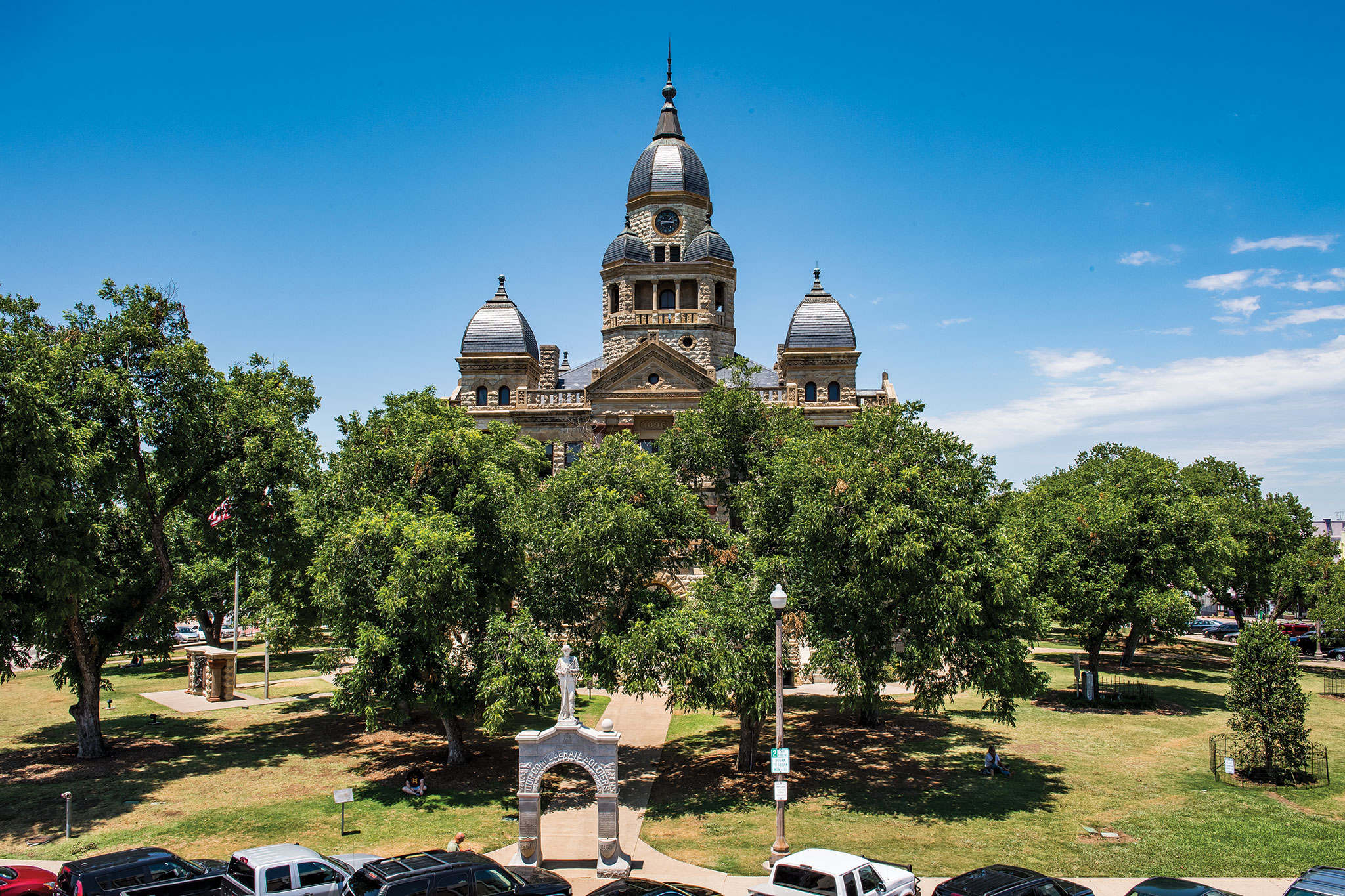
Photo by Chase Fountain / TPWD
The Denton County Courthouse serves as a focal point and gathering place for Denton.
DESTINATION TRAVEL
All That Jazz
Denton's a college town with a syncopated beat.
By Russell Roe
It’s not every day that you see somebody walking down the street carrying a tuba, but it’s exactly the kind of thing you might see in Denton, home of the prestigious University of North Texas College of Music.
Katelyn Steffen is walking down UNT’s Chestnut Street on the way to band practice with her sousaphone wrapped around her torso, looking like a one-woman marching band.
“I had a pep rally and then a lab, and I didn’t have time to drop off my tuba before band practice,” says Katelyn, a UNT student.
The presence of 37,000-student UNT and 15,000-student Texas Woman’s University means Denton maintains a youthful, and musical, energy.
“There are unique qualities to this town,” Ken Currin, one of my old college friends from UNT, tells me over lunch at the Juicy Pig, one of the three restaurants he owns in town. “It’s a university town. That’s what always separated it from other places. Your neighbor might be a psychology professor.”
These days, Denton thrives as a college town, a music hub and a county seat with an active downtown square. With its location on the outer edges of the sprawling Dallas-Fort Worth Metroplex, it’s able to maintain some small-town qualities.
Denton has certainly grown since I went to school at UNT in the 1980s, but what I consider “essential Denton” — the central area containing the universities and downtown — has maintained its character. I am happy to revisit it with my girlfriend Heather, guided by old friends and longtime Dentonites Ken and Carey Currin.
Our first stop is the downtown courthouse, an eye-catching Romanesque building constructed in 1896 that certainly stands as one of Texas’ finest courthouses.
“Everybody thinks they have the best courthouse — so do we,” says Gretel L’Heureux of the Denton County Office of History and Culture. “Old ones like this are hard to beat.”
We climb the stairs to the dome and take in the expansive views of Denton — north, south, east and west.
“This is the heart of the city and the heart of the county and the center of this historical district,” says Greg Smith of the Texas Historical Commission as we stand on the courthouse’s viewing deck. Smith is here for a State Board of Review meeting considering National Register nominations.
Downstairs in the museum, we soak up local history as we examine the “40 for 40” exhibit displaying 40 artifacts for the 40 years of the courthouse museum’s operation. The exhibit tells the story of the county through items such as the old Schmitz Furniture Store cash register and a signed guitar from the Eli Young Band, which formed while its members went to UNT.
We meet up with Ken after the tour at the grave of John B. Denton on the courthouse lawn. Ken says the courthouse grounds serve as the city’s gathering place, with people hanging out here on benches and the lawn most nights of the week and for special events. The restaurants, bars and other businesses around the square make it a happening place.
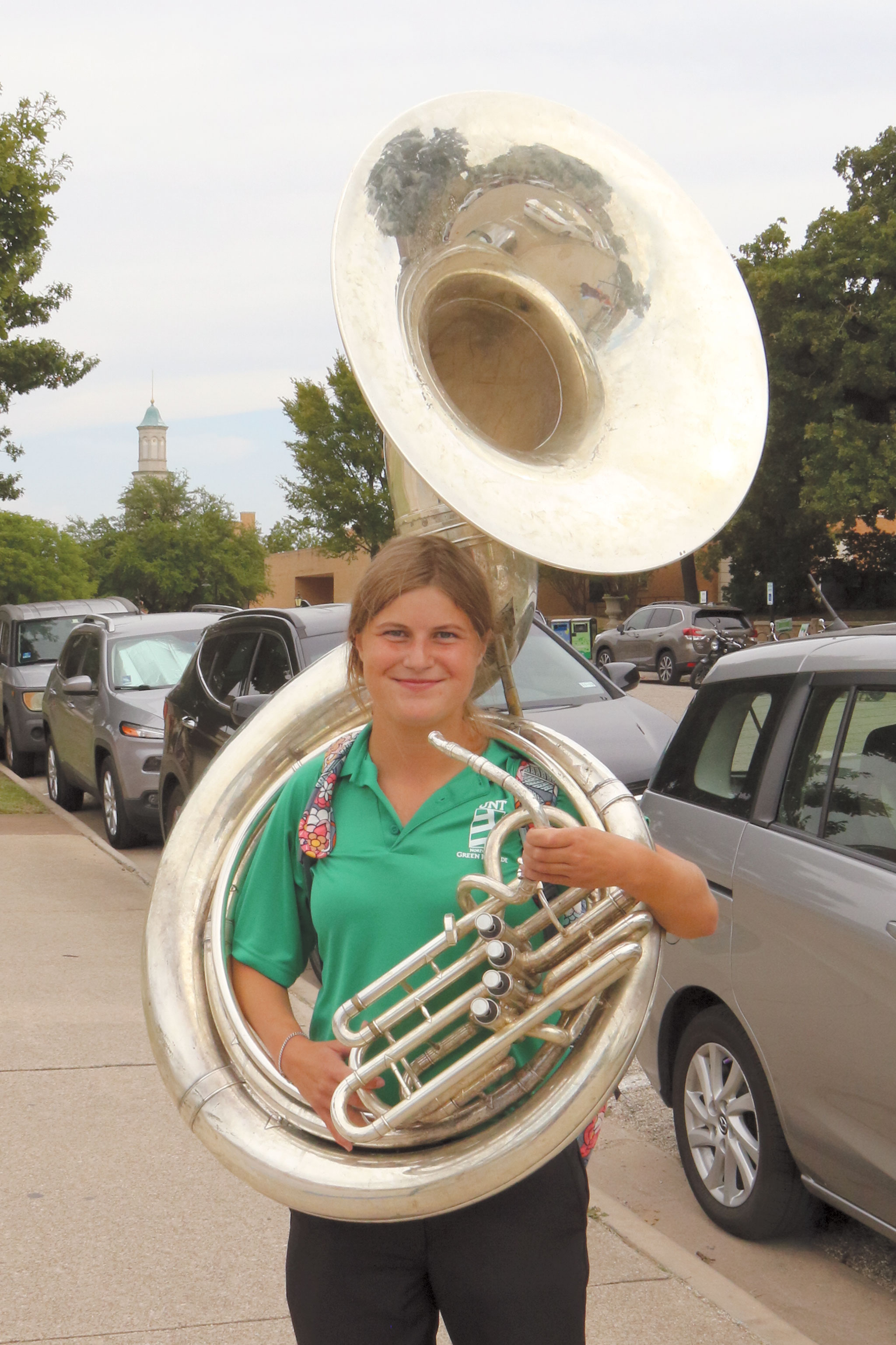
Photo © Kuhlken Photography
The University of North Texas is known for its music program.
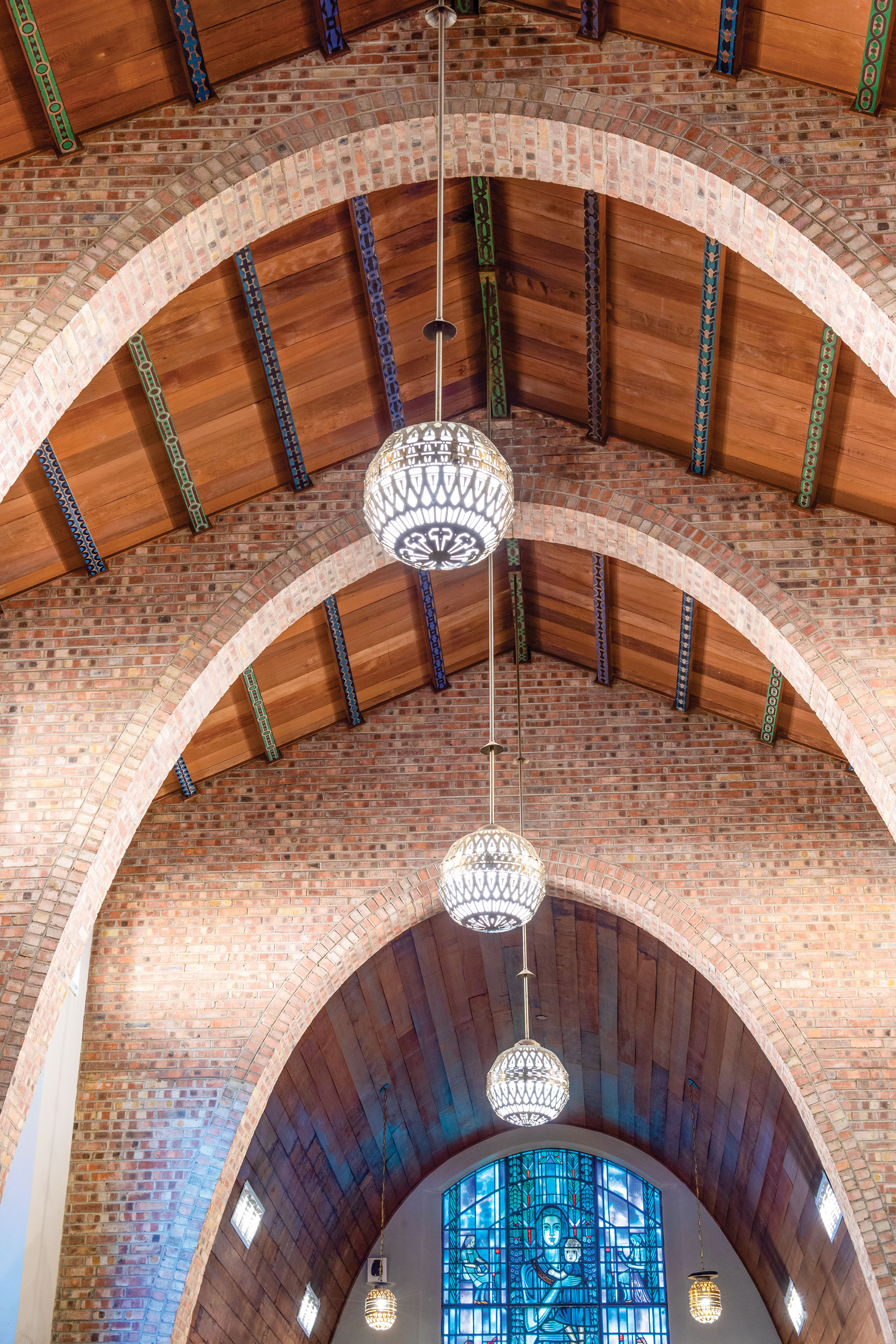
Photo by Chase Fountain / TPWD
The O’Neil Ford-designed Little Chapel in the Woods is a popular spot for weddings.
That night, we have dinner at Tex Tapas in a revitalized area a couple of blocks off the square. The crispy feta, seared Brussels sprouts and green curry meatballs prove to be favorites.
After dinner, we shift next door to Steve’s Wine Bar, where a local jazz combo supplies live music.
Denton is known for its music, and it is particularly known for its jazz. UNT was the first university in the country to offer a jazz studies degree, and its One O’Clock Lab Band has earned multiple Grammy nominations and toured the world. Denton and UNT have produced an impressive slate of musicians, including Brave Combo, Norah Jones, Michael Martin Murphey and Pat Boone.
Later, we poke our heads into Dan’s Silverleaf, the premier live music club in town. Tonight’s band is Wood and Wire, an Austin-based Americana band.
Denton often draws comparisons to Austin, both being college towns with music scenes.
“We’re a smaller version of what used to be cool about Austin,” Ken says. “We used to be a town full of people who wanted to move to Austin. Now they don’t. We even get people who have moved here from Austin.”
The next morning, we head off to Ray Roberts Lake State Park, nestled on the shores of Ray Roberts Lake just northeast of town. The park’s main Isle du Bois Unit, which opened in 1993, features camping, hiking, boating, fishing and mountain biking. We are here for a “forest bathing” hike.
“The idea of forest bathing, or shinrin-yoku, is to connect to nature,” says park ranger Rick “Ranger Rick” Torres. “Slow down and be mindful. Use your senses. What do I smell? What do I hear?”
We start on a short hike down a park trail lined with pine trees.
Ranger Rick stops at a patch of beebalm. He takes a leaf and breaks it up in his hand so we can smell its minty aroma.
He encourages us to squat down and feel the sandy soil beneath our feet. Digging in with our hands, the sand feels much cooler just a few inches below the surface.
Having covered smell and touch, Ranger Rick turns to hearing.
“Open your ears,” he says. “What do you hear?”
“Birds,” says one park-goer.
“Insects,” says another.
“Those are the sounds of nature,” Ranger Rick says.
He goes on to point out the fractal patterns found in the spiral of a pine cone, the varieties of green we see in the plants around us and the different textures of tree trunks. We munch on the purple berries of the beautyberry bush.
It all opens our eyes to the many ways nature can be experienced. Our hourlong hike has been a smorgasbord for the senses.
“If you take time to connect with nature, it really nourishes your mind, body and soul,” Ranger Rick says.
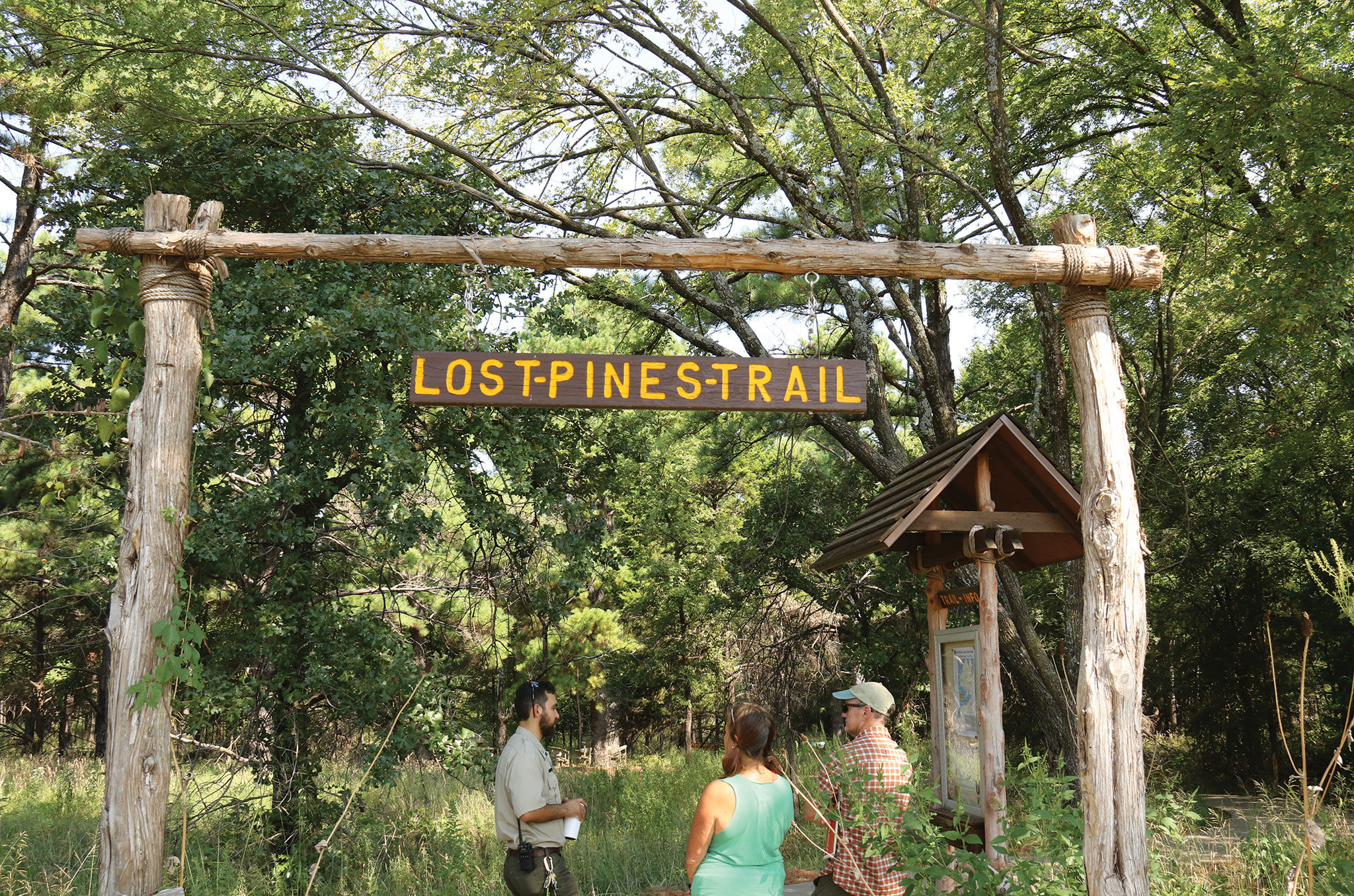
Photo © Kuhlken Photography
“Ranger Rick” Torres finishes leading a sensory-filled “forest bathing” hike at Ray Roberts Lake State Park.

Photo by Chase Fountain / TPWD
The Old Alton Bridge harbors an eerie ghost tale.
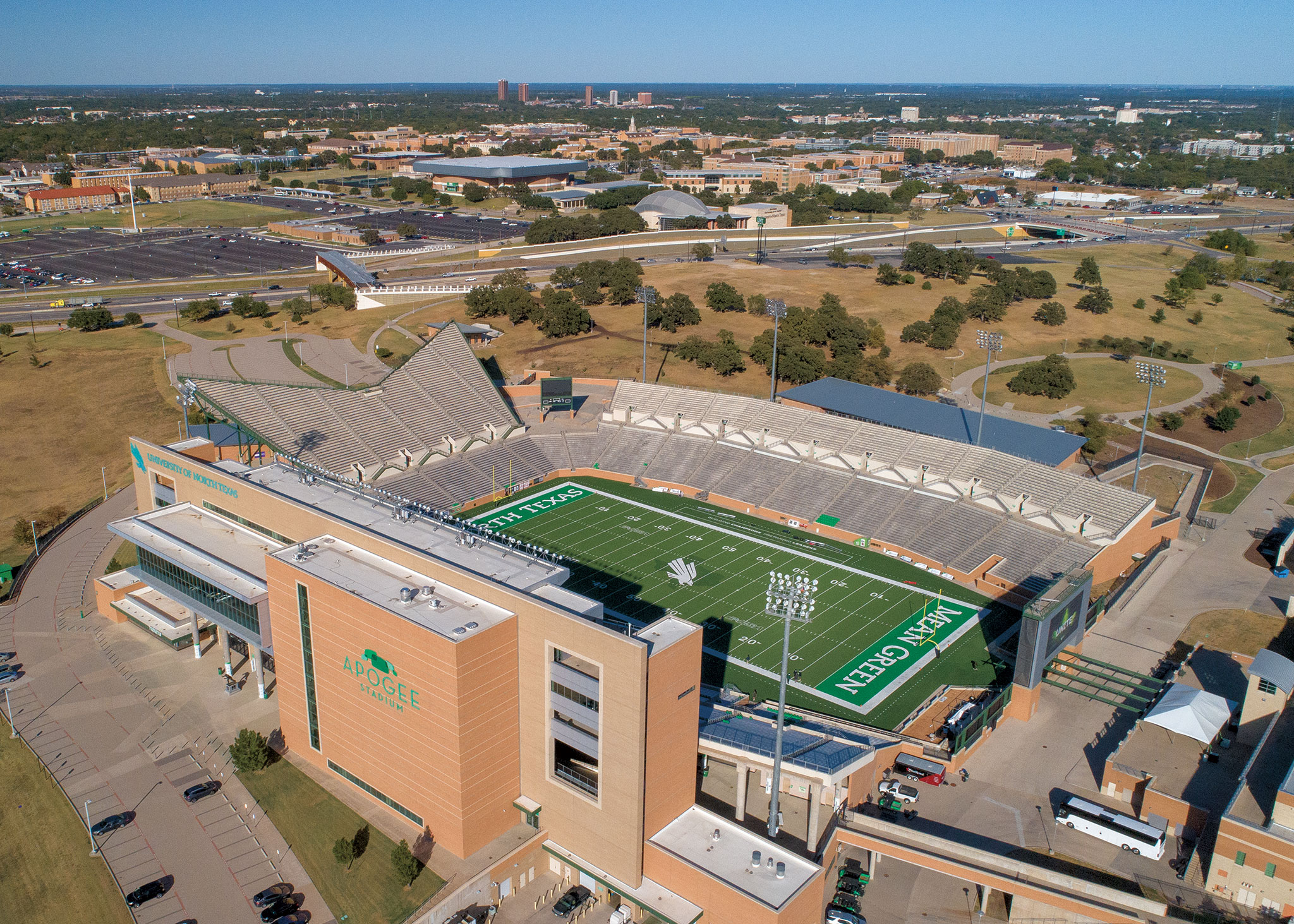
Photo by Chase Fountain / TPWD
The University of North Texas brings a steady stream of college kids to town.
We brought along our bikes so we can hit the Ray Roberts Greenbelt Corridor Trail, and that’s where we go next.
The 21-mile (out and back) trail runs from the Ray Roberts Dam to Lake Lewisville along the heavily wooded banks of the Elm Fork of the Trinity River. The day’s 97-degree temperature takes its toll as the sun beats down on us, but the shaded portions of the trail provide relief. The crushed limestone trail is flat, scenic and easy enough for all skill levels (the lower half of the trail has been closed because of flood damage).
After the ride, we head back to town for an evening of ghostly adventures — a downtown ghost tour followed by a visit to the Old Alton Bridge, otherwise known as Goatman’s Bridge.
Shelly Tucker meets us at the courthouse square for her “Ghosts of Denton” tour.
As we walk around the square, she regales us with stories of actors, gamblers and others who met untimely deaths, experienced ethereal events or otherwise stood face to face with the unexplained.
“I dig for the history behind the mystery,” she says.
Afterward, we stop for dinner at the popular LSA Burger, where the inviting rooftop deck offers an elevated view of the square.
The second part of our spooky double-header takes us to the Old Alton Bridge, a historic iron truss bridge that’s home to one of Denton’s legendary ghost tales. We approach it with a sense of dread.
The bridge was built in 1884 over Hickory Creek. The ghostly legend concerns a successful African-American goat farmer who is said to have been lynched on the bridge by the Ku Klux Klan. According to the tale, when the Klan went below the bridge to make sure the goat farmer was dead, the noose was empty, and the farmer’s body was nowhere to be found. Over the years, numerous sightings of ghost-like figures have been reported.
As we walk toward the bridge on a dark Saturday night, we realize we didn’t bring flashlights. My spine tingles as we walk across the bridge, trying to imagine the sinister deeds of the past.
Other visitors arrive with flashlights, and the lights reflect off the multitudes of spider webs covering the bridge overhead. So many spiders! I think I was happier not knowing about all the spiders. One big spider drops down and almost lands on a guy’s head. Yikes! We don’t see the Goatman, but we decide we’ve had enough and head back to Denton.
The next morning, we decide to make one last stop, at the Little Chapel in the Woods, designed by renowned architect O’Neil Ford. Situated on the TWU campus, the chapel is one of the most popular places to get married in town and remains a place of architectural significance.
As we explore the gardens nearby, I point out some beautyberries to Heather and jokingly suggest they could be our breakfast, just as they had been a snack the previous day at Ray Roberts. She declines, not caring for the taste, and suggests instead the flower of the Turk’s cap plant next to it. I tear off one of the red flowers and pop it in my mouth.
The flower’s taste is much like our taste of Denton has been — sweet, surprising and satisfying.
MORE INFO:
DENTON TOURISM
RAY ROBERTS LAKE STATE PARK
DAN'S SILVERLEAF
DENTON GUOST TOUR
LITTLE CHAPEL IN THE WOODS
Related stories
» Like this story? If you enjoy reading articles like this, subscribe to Texas Parks & Wildlife magazine.

